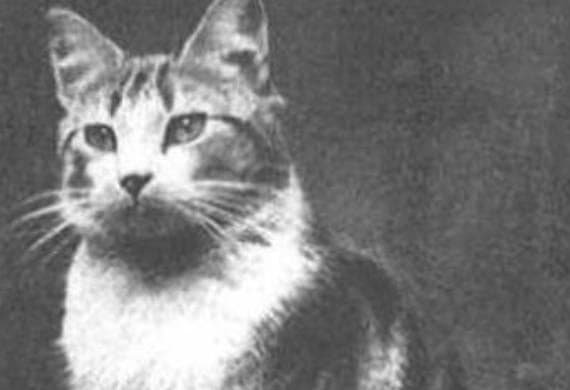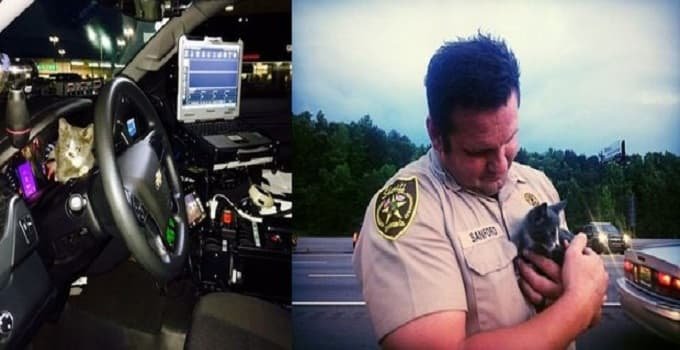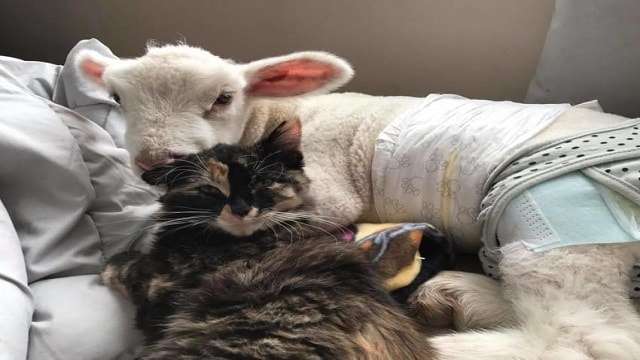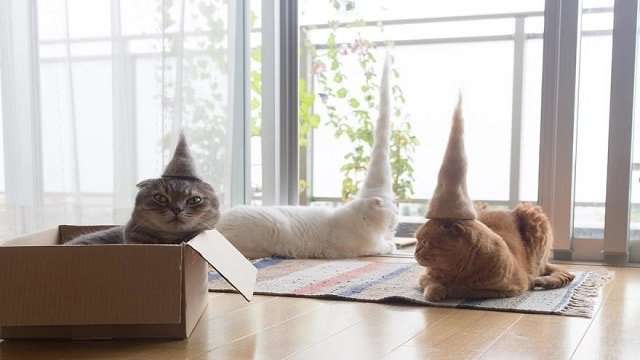Cats are quite often overlooked in the history of military animals, and for the most part, all of our famous wartime cats became so during the 1st and 2nd World Wars, when cats were still very much a part of the naval service – both here in the States and abroad. These were those days when it was essential to have a good ratter/mouser on board to protect the food stores. Just like their human counterparts, some cats performed above and beyond their daily service. In other cases, the cats were not official members of the service, but they showed courage under fire, or assisted in the survival of troops on the ground. We have gathered five cats that stand out for their exceptional wartime actions.
Pictured: Ship’s cats on board the HMS Hawkins, 1919
#5 Crimean Tom
Sevastopol Tom, or Crimean Tom, was most certainly an accidental hero. In 1854, when British and French troops occupied the Russian port town of Sevastopol, Tom led the hungry troops to caches of food beneath the rubble, which had been hidden all along the waterfront by the Russian defenders. Though not an official military cat, Tom was even adopted as a mascot by the grateful soldiers and was taken along to England when the troops were called back.
#4 Tiddles
Tiddles, a born and raised ship cat, served a handful of Royal Navy aircraft carriers, but served with the HMS Victorious in the early 1940s as the official Captain’s Cat. It can only be assumed that he performed his duties ably, since he traveled over 30,000 miles during his naval service. He may also be one of the very reasons for why the black cat is considered lucky in Great Britain.
Pictured: Ship’s Cat Tiddles on board the HMS Victorious, back on July 1942.
#3 Faith, the Faithful Church Cat
One of the more well-known cat stories is the one about Faith, a cat who made her home at Saint Augustine’s Church in London in 1936. On September 6, 1940, the mother of one apparently had a funny feeling and moved her recently born kitten from the warm upper floors to the basement — just a day before London was hit by German air bombs. She and her kitten, named Panda, were rescued from beneath the rubble by Father Henry Ross, and she was later awarded a special medal for bravery — for “steadfast courage in the Battle of London.”
Pictured: This is only known picture of Faith.
#2 Able Seacat Simon
Able Seacat Simon (his official title), of the Royal Navy’s HMS Amethyst, began his career all the way back in 1948 as the Amethyst’s formal ratter. During the time he served, Simon performed his duties so efficiently that he was twice awarded in 1949. The first after a particularly grueling fallout with Chinese forces, Simon was awarded an Amethyst campaign ribbon for his valiant service. The next was the Dickin Medal awarded for animal gallantry. Simon is the only cat to have received the Dickin Medal, and when he passed away, he was buried with full naval honors.
Pictured: Able Seacat Simon on board the HMS Amethyst with a few of his shipmates, 1949.
#1 Pfc. Hammer
Even today, a good mouser is still celebrated and cherished. Pfc. Hammer proved his mettle when he himself decided to move in with the troops of a U.S. Army unit in Iraq in 2004, killing and chasing away mice that might have devoured or contaminated the soldiers’ food stores. The men were so grateful for Hammer’s hard work and affection toward them that they actually made him an honorary member of their unit, and applied for and received help from Alley Cat Allies and Military Mascots to bring Hammer home to America after their deployment. Hammer now lives in Colorado with his old comrade, Staff Sgt. Rick Bousfield.















